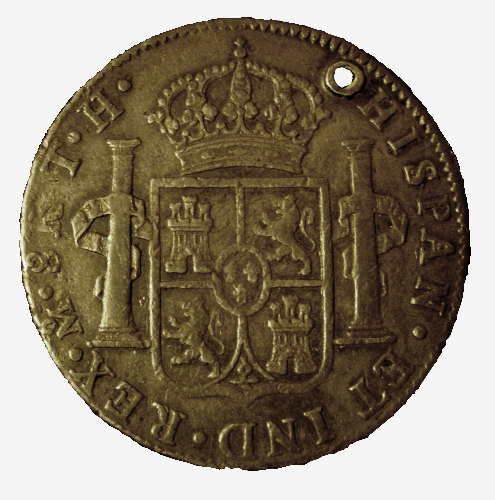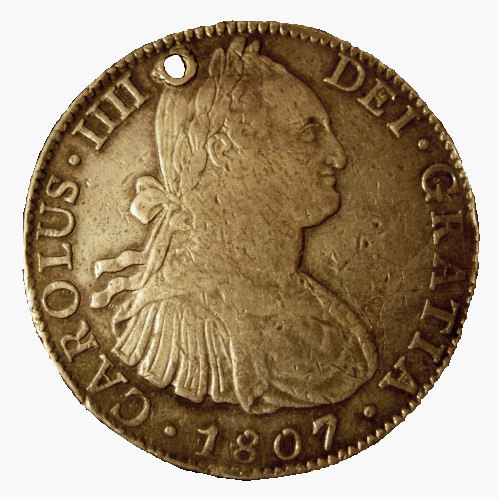



| This is another example of an eight-reales silver coin of the early Nineteenth Century. {Note: The obverse appears on the right side; the reverse is on the left. Despite the coloration of the image, this is a pure silver coin.} As noted in the photos above, this coin is dated to the year 1807. The legend on the reverse side reads: "Hispan Et Ind Rex", which translates into: "King of Spain and the [West] Indies". Minted in Mexico City (as noted by the letter M with a small "o" above it on the reverse), this coin also includes the numerals/letters 8R and T and H. The "8R" refers to the denomination: eight reales. The letters "T" and "H" are the initials of the names of the assayers at the Mexico City mint in the early 1800s. In this case, during that time period (1803-1810) a single assayer is not known; it is believed that there were a number of assayers who worked together, who employed the "T" and the "H" initials. This eight reales coin has a small hole bored in it. Holes provided a convenient way for the owner to string multiple coins on a string, for carrying and preventing loss. Notice that the hole has a raised border on both sides of the coin. This in indicative of the hole having been bored, rather than drilled. If it had been drilled, there would be no raised border around the hole; the material that had been where the hole now is located would have been cut away. The raised material forming a border is the material that was pushed out of the hole in the process of boring it. This coin bears the same images on the reverse and obverse as the previous years, but on the obverse, along with the legend "Dei Gratia", translating as "Thanks be to God", the name of the king is given as Carolus IIII, or "Carlos IV". |
